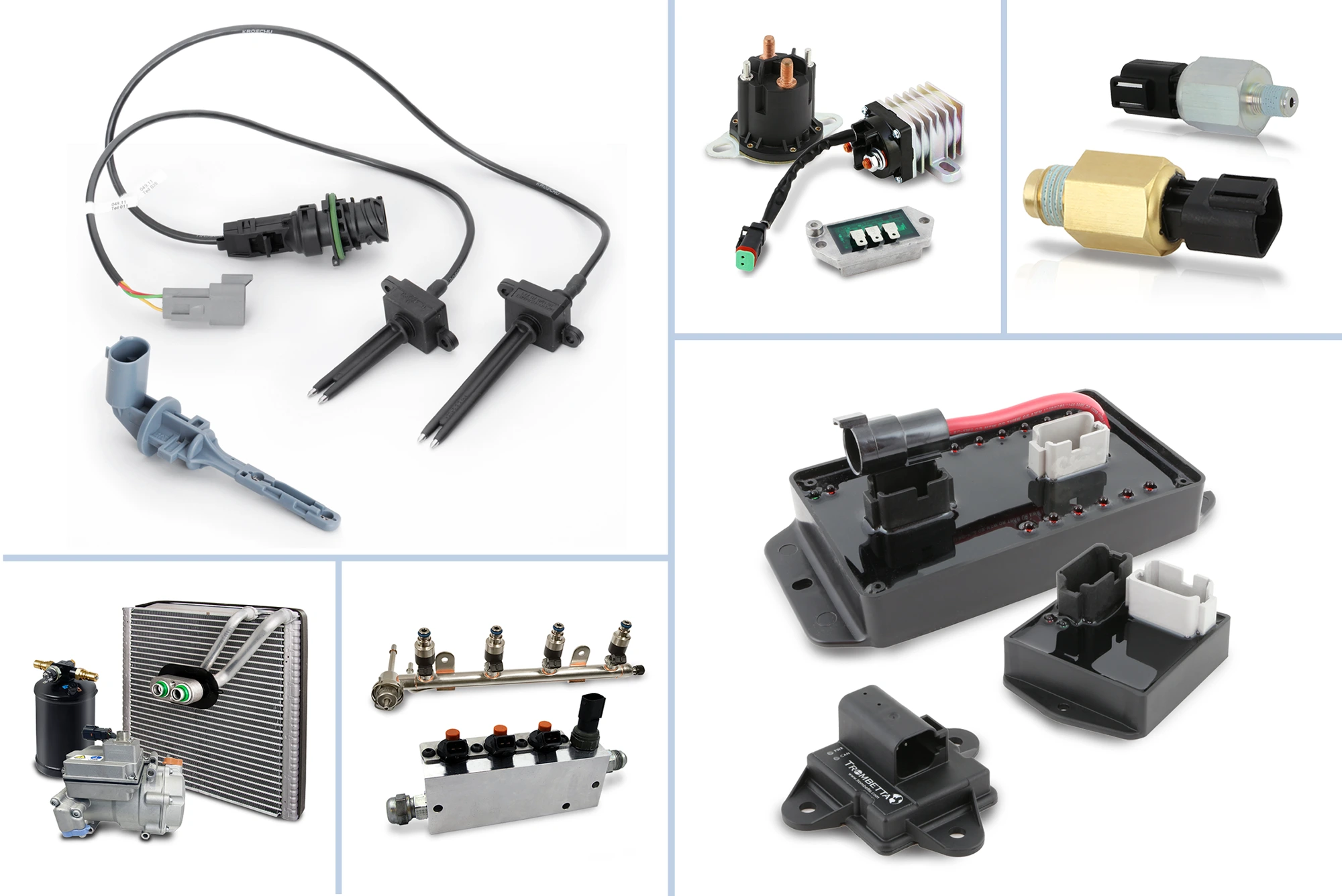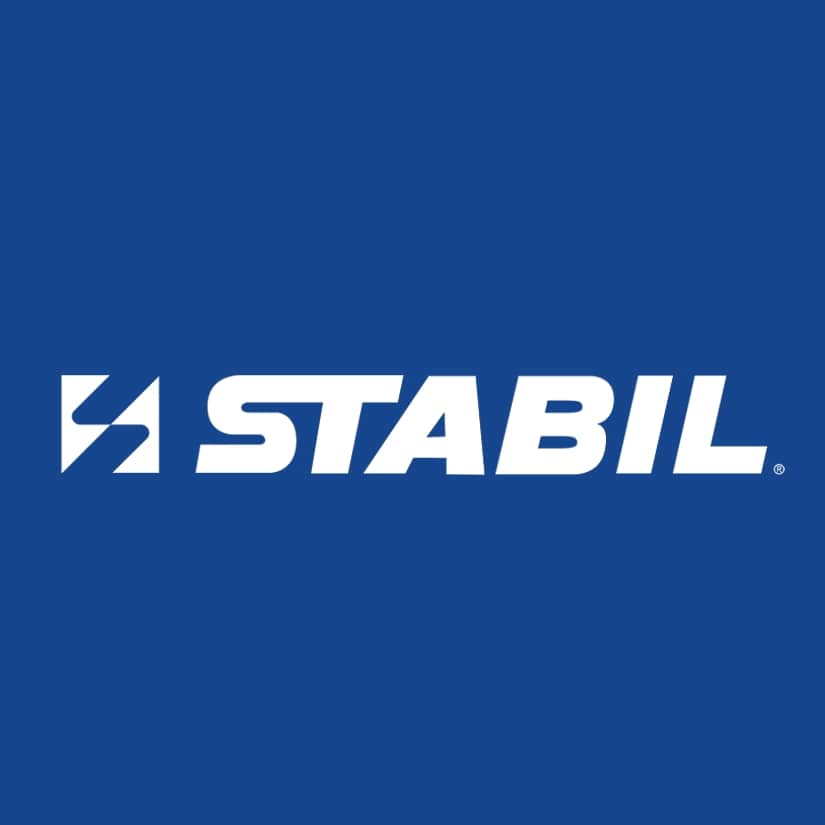January 01, 2023 / Training
A Closer Look: Variable Valve Timing
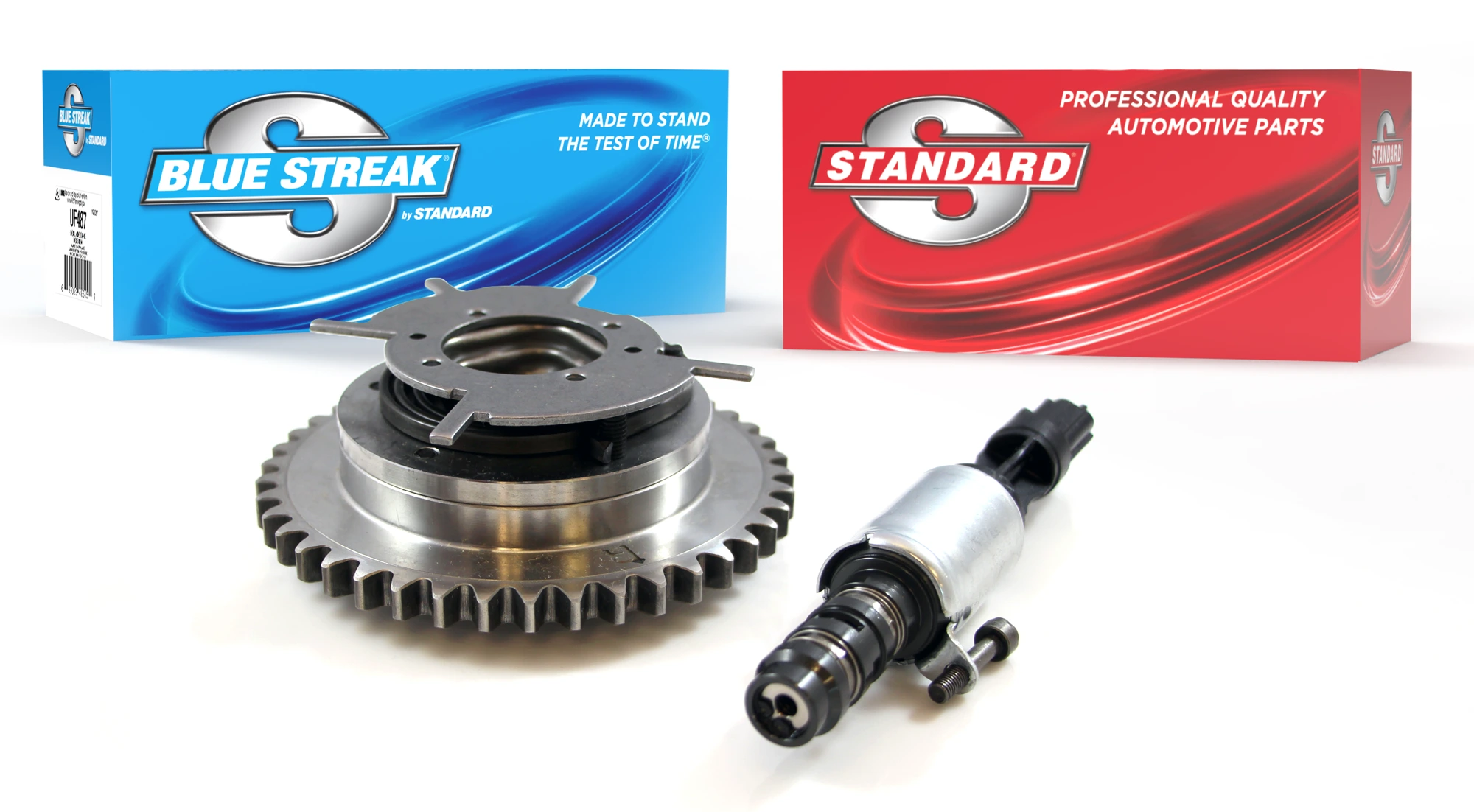
Variable Valve Timing Overview
In an effort to increase fuel efficiency and elevate performance across today’s vehicles, nearly every manufacturer has equipped new vehicles with Variable Valve Timing (VVT) technology, also known as Variable Cam Timing (VCT).
The primary components in a VVT systems are control solenoids and sprockets. These parts, in conjunction with other components including timing chains, drive gear sprockets, crankshaft position wheel, crankshaft seal, and gaskets, make up the VVT system. Most VVT systems are oil-activated, and some newer systems operate off rotational torque from the engine.
How does VVT work?
The control solenoid receives a signal from the PCM and meters the flow of engine oil through a series of passages. This moves the sprocket to the advance or retard position. On engines with a fixed camshaft, engineers have to balance between idle quality and performance on one side, and emissions and fuel economy on the other. As a result, none of these goals are achieved completely. Variable valve timing allows the engine to obtain a smooth idle while achieving the rest of the goals. Modern VVT systems combined with technologies like electronic throttle control and direct fuel injection allow smaller engines to produce higher horsepower and torque at a lower RPM.
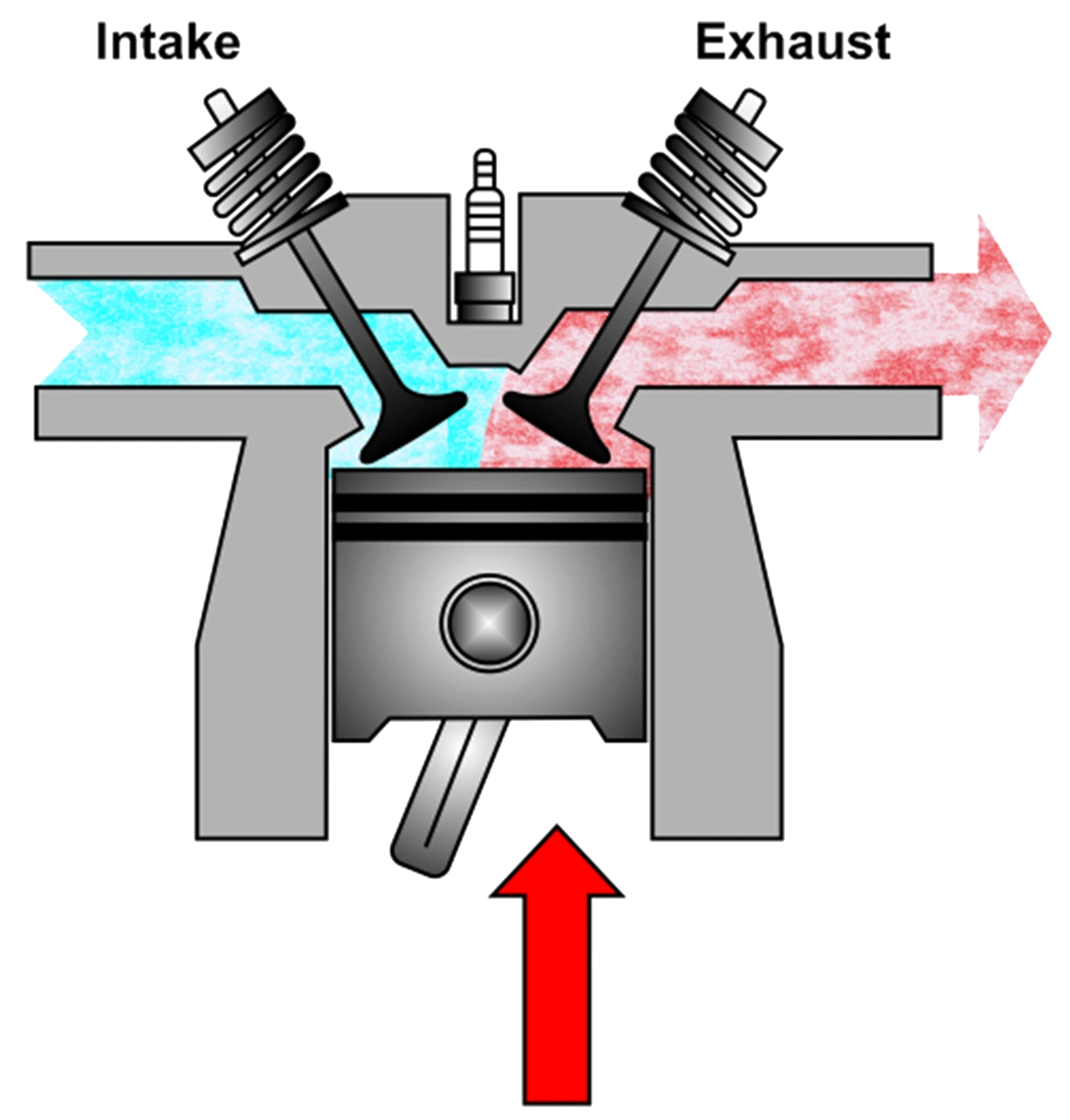
For increased performance, the exhaust cam is retarded a small amount to promote engine breathing. Higher engine speeds mean shorter valve open times and increased air velocity. The increased velocity pushes more exhaust out of the cylinder. The retarded exhaust valve timing increases Volumetric Efficiency. The exhaust valve is still open when the intake opens. Outgoing exhaust pulse creates a low-pressure zone behind the valve, which increases the pressure differential between the intake port and the combustion chamber. The result is better cylinder filling. Remember, this can’t be done at idle due to low air speeds.
To provide an EGR function, the exhaust cam is fully retarded, which significantly delays the opening of the exhaust valve and adds lots of valve overlap. As a result, the exhaust gas remains trapped in the cylinder. Opening the exhaust valve later retains more exhaust pressure in the cylinder, causing pushback to the intake charge and exhaust gas retention.
On some systems, the intake camshaft is advanced as the throttle opens. The placement opens the intake valve sooner and allows some exhaust gas into the intake stroke, which has an EGR effect. It also closes the intake valve sooner, which increases the compression stroke. On a cold engine, opening the intake valve sooner will also warm the intake charge and assist in reducing startup emissions.
Some newer systems utilize the best of both worlds; they control multiple cams independently of each other. In dual independent systems, the exhaust camshaft is retarded, and the intake valve is advanced independent of each other. Doing so maximizes the EGR effect and further reduces pumping losses for maximum efficiency.
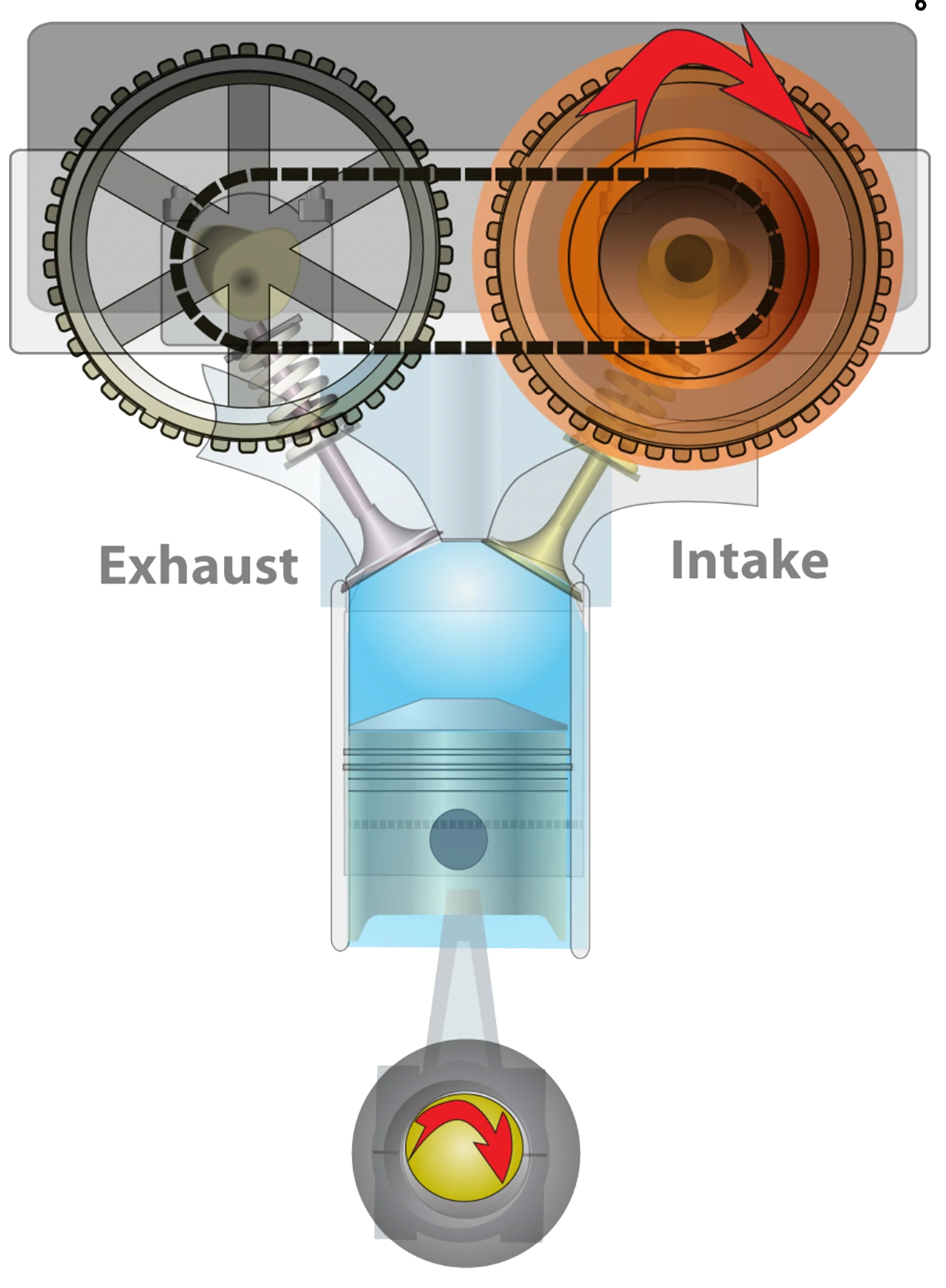
VVT System Failure Causes and Effects
While VVT is a beneficial system, it is not immune to failure. Most failures are caused over time by low engine oil levels, poor oil circulation, or oil and filter change irregularities. Since oil pressure is used to advance or retard many of these systems, it is crucial that the correct specification of oil is used and that oil is changed regularly. Symptoms of issues with a VVT system include a rough idle, engine noise, an unstable idle, stalling, lack of power, and decreased fuel efficiency. Motorists will often be alerted to the issue by the Check Engine light.
In many cases, when a VVT component is being replaced, it is recommended that companion components be replaced at the same time, due to the “in service” time being the same. Similarly, if a timing set is being replaced on an engine with VVT, the VVT components should be replaced. Any time the VVT system is serviced, an oil and filter change is highly recommended.
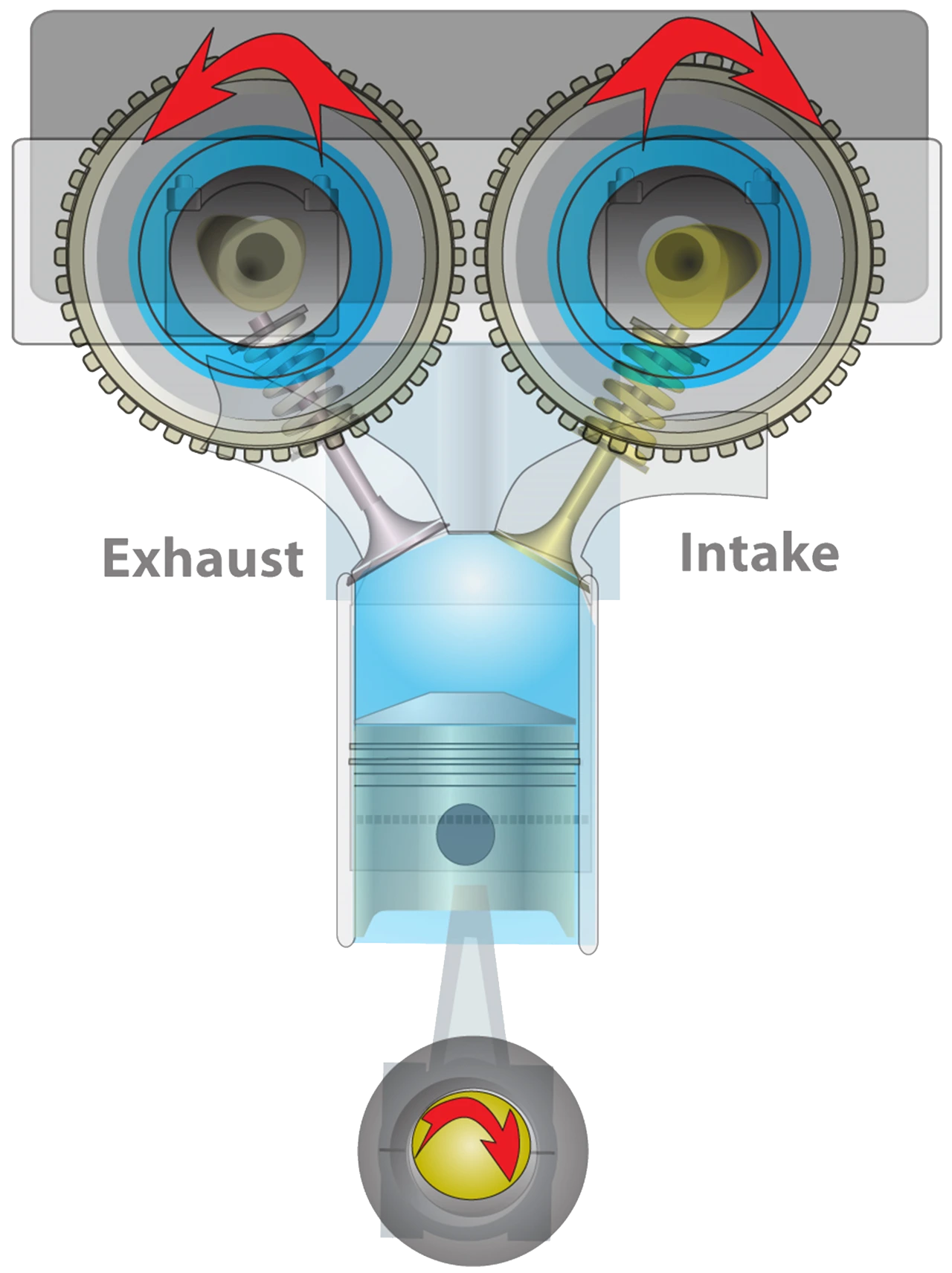
Choosing the Best Parts for the Job
Standard® and Blue Streak® VVT Solenoids and Sprockets are engine specific, and are engineered to keep complex VVT systems operating as designed. Each VVT Solenoid features anodized steel componentry, which limits sludge buildup and protects against sticking. They also feature premium O-rings and gaskets to prevent oil leaks, as well as an OE-match harness connector. Standard® and Blue Streak® Sprockets are direct-fit OE replacements that meet tight dimensional tolerances to improve internal sealing, minimize oil drain back, and reduce the frequency of PCM correction. Blue Streak® Sprockets build on this, offering engineering improvements for enhanced durability and longevity.
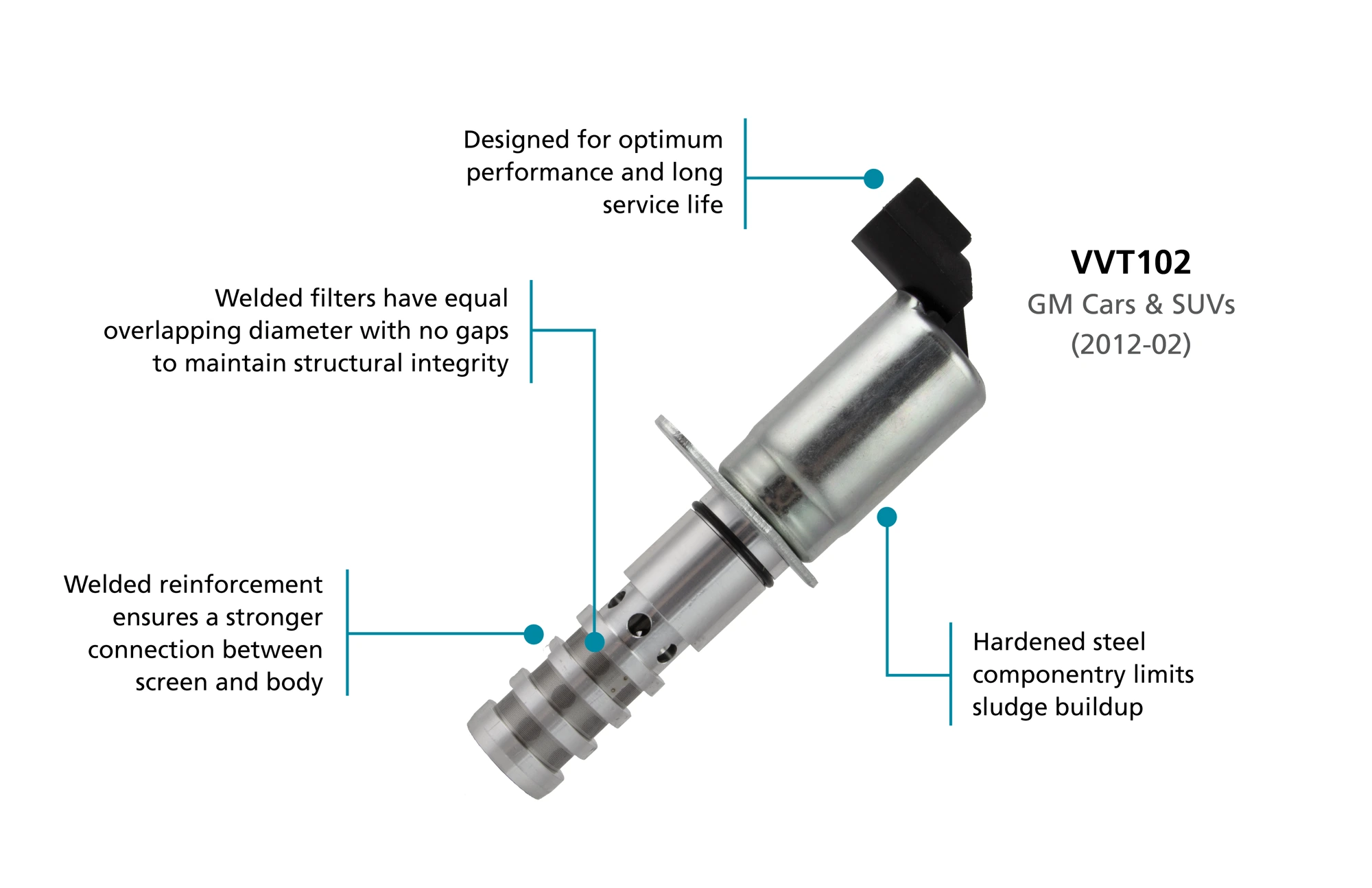
VVT102
The Blue Streak® VVT102 Solenoid features several additional upgrades over OE and other aftermarket products. The Blue Streak® Solenoid features coated terminals for rust protection and better contact than the OE design. Additionally, Blue Streak® Solenoids utilize crimped rings for a long-lasting part, while competitors often use pressed rings, which can fall apart over time. The brackets are pressed to the valve body to ensure a secure connection, unlike most OE and competitive solenoids. Finally, the VVT102 features internal steel bushings for a longer-lasting Solenoid.
All Standard® and Blue Streak® VVT Solenoids and Sprockets undergo a full spectrum of quality testing including thermal shock, thermal cycling, salt spray, vibration, storage tests, and more. The Standard® line also includes an array of related components including VVT Spool Filters, Chain Tensioner Kits, Position Adjuster Magnets, as well as several Blue Streak® VVT Kits.
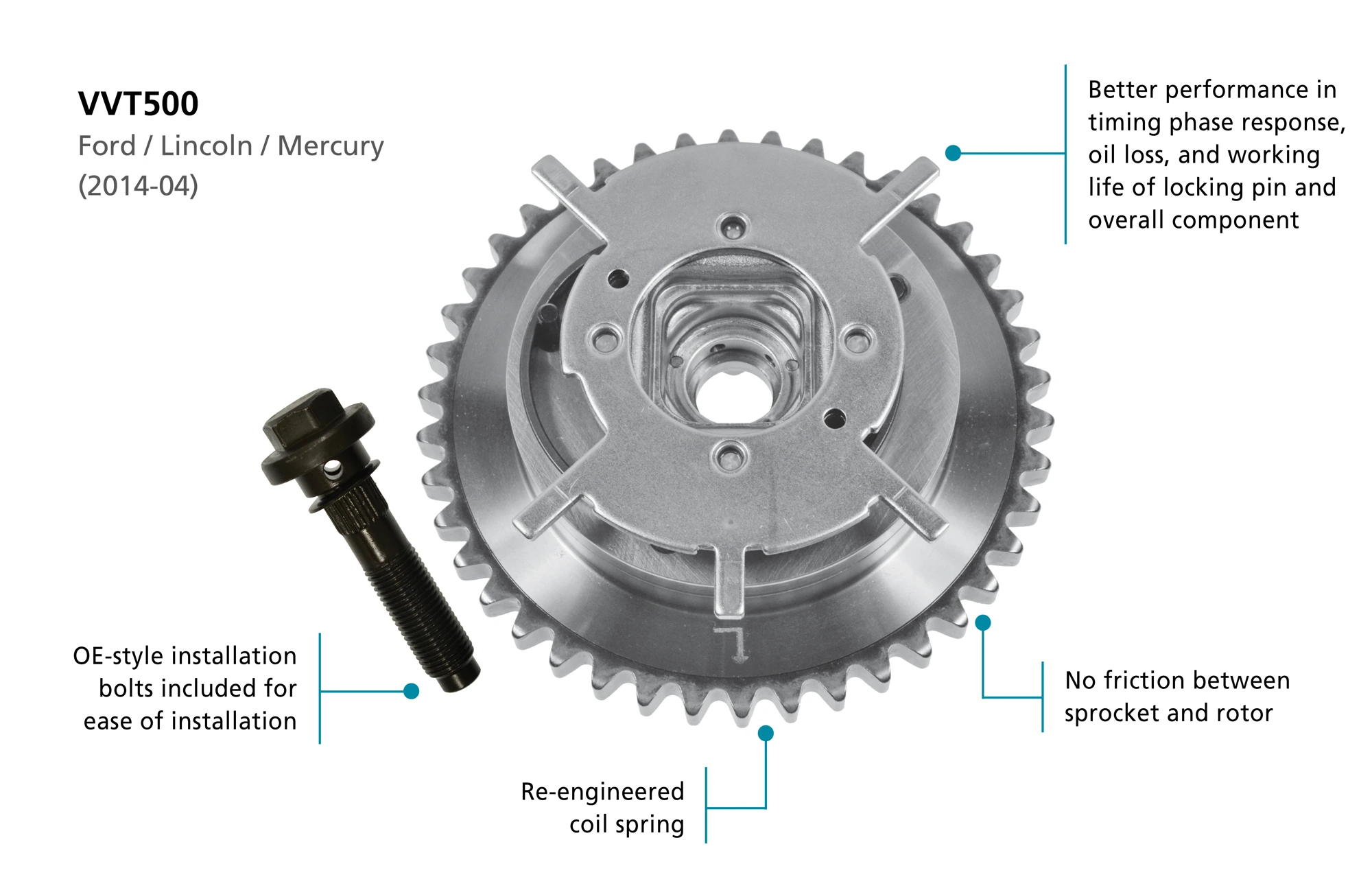
For more information on replacing these components, search “VVT” on StandardBrand YouTube channel or visit StandardVVT.com.
March 01, 2024 / Training
Why Pentastar Oil Filter Housings Fail
In service since 2011, the Chrysler Pentastar 3.6L engine has powered more than 10 million of the most popular vehicles on the road. These Pentastar engines are equipped with oil filter housings, which contain the oil filter, sensors, and a heat exchanger to help cool the oil. The oil filter housings on the Pentastar V6 engine have become known for their high failure rates. These failures have mistakenly been attributed the idea that the housings can warp due to heat, but this has been proven false. So, why do these units typically leak?
August 15, 2022 / Training
Variable Valve Timing (VVT) Repair Tips
Variable Valve Timing (VVT) or Variable Cam Timing (VCT) is common on most newer engines. These systems are designed to reduce emissions and maximize engine performance and fuel economy. Here's some background on VVT and a few tips for dealing with issues that come up.
August 22, 2022 / Training
Variable Valve Timing (VVT) Operation
Variable Valve Timing (VVT) systems help reduce emissions and maximize engine performance and fuel economy. The VVT Solenoid (Oil Control Valve) meters the oil flow to control the actuation of the VVT Sprocket (Actuator or Phaser). The VVT Sprocket mechanically shifts the position of the camshaft. Here are a few tips for testing.
August 08, 2022 / Training
Turbocharger Diagnosis Tips
Turbocharged engines are becoming more popular, as vehicle manufacturers look to increase fuel efficiency, maintain performance and reduce emissions. Symptoms of a malfunctioning turbocharger include loss of power, excess smoke, high fuel consumption, overheating, high exhaust temperature and oil leaks from the turbo. Here are a few important diagnostic and repair tips to keep in mind.
August 12, 2022 / Training
Tire Pressure Monitoring System (TPMS) Repair Tips
The Tire Pressure Monitoring System (TPMS) is a safety device that measures, identifies and warns you when one or more of your tires is significantly under-inflated. Standard® and Intermotor® are committed to helping technicians with TPMS repairs, whether it’s offering OE-Match TPMS sensors or providing repair tips from our team of ASE-certified master technicians. Here are a few TPMS repair tips.
August 05, 2022 / Training
Mass Air Flow (MAF) Sensor FAQs
The Mass Air Flow (MAF) sensor is a key component of the engine’s fueling strategy. It is crucial that the MAF sensor reports with 100% accuracy to ensure peak performance, fuel economy and reduced emissions. Here are some helpful tips such as how and when to replace them and steps to extend their longevity.
August 19, 2022 / Training
Ignition Coil Operation
Coil-on-plug assemblies are designed to convert a low voltage (primary side) to a high voltage (secondary side) to fire the spark plugs. They perform the functions of both the ignition coil, which creates the spark energy, and the spark plug wire set, which delivers the high-voltage energy to the spark plug. Today's coil-on-plug assemblies come in a variety of physical and wiring configurations.
August 01, 2022 / Training
Diesel Engine Repair Tips
Diesel Engines have become more popular thanks to a steady string of advancements. New engine designs, noise and vibration-damping technologies, and improvements like electronic engine control have spawned a new generation of engines that are more powerful and fuel efficient than similar-size gasoline engines. Learn more about today's diesel engines with these repair tips from our team of ASE-certified master technicians.
September 16, 2022 / Training
A Closer Look: Tire Pressure Monitoring Systems (TPMS) Operation
The Tire Pressure Monitoring Systems (TPMS) is a valid safety device that has been mandated for years. TPMS introduced a lot of new terminology – initiate, program, activate, clone, protocol and relearn. This safety system, a prime service opportunity, warns drivers of issues with their tires and protects motorists from potential danger.
January 15, 2024 / Training
A Closer Look: Servicing Electric and Hybrid Vehicles
Hybrid vehicles have been sold in the U.S. for over 20 years. As hybrids continue to grow in popularity, and as fully electric vehicles have entered the market in the past several years, they have brought with them numerous service opportunities for aftermarket repair facilities. Whether shops dive in and get involved with replacing batteries, inverters, or other high-voltage components, or they stick to light-duty servicing, there is plenty of work to go around.
January 08, 2024 / Training
A Closer Look: Ignition Coils
Engine misfires, rough idle, a decrease in power under acceleration, poor fuel economy, and a check engine light are all signs of an ignition coil that has failed. OE coils are known for their high failure rates. Read along for more information on ignition coils, how to diagnose a failed one, and why an original equipment manufacturer’s coil may not be the best replacement choice.
January 12, 2024 / Training
A Closer Look: Gasoline Direct Injection (GDI)
Gasoline direct injection (GDI) is used on most new vehicles and requires a different approach to diagnosis and service. GDI technology has been an integral part of helping to improve fuel economy while reducing emissions and can be found in more than half of the U.S. fleet. In fact, the use of GDI engines has grown by over 600% since 2010. This means that in the next five years, 42 million more vehicles with GDI will enter the Aftermarket “Sweet Spot” of 6-12 years old, during which their injectors and related parts may need to be serviced or replaced. While GDI systems have proved effective, these systems encounter specific failures and require an understanding of how they work and how to test them when they set a code.
January 26, 2024 / Training
A Closer Look: Emissions
The Check Engine Light (CEL) is arguably one of the most effective yet underappreciated advancements in reducing vehicle emissions. Following the introduction of On-Board Diagnostics II (OBD II), the CEL is illuminated continuously if an on-board system monitor has failed a specified number of times and is negatively affecting emissions. If a catalyst-damaging event, such as a misfire, occurs, the CEL will flash. In today’s world of electric vehicles, hybrids, and partial zero-emission vehicles, many people forget that simply keeping their internal combustion engine (ICE)-powered vehicle operating as designed will help in reducing emissions.
September 12, 2022 / Training
A Closer Look: Electronic Throttle Bodies and Control Systems
Electronic Throttle Control (ETC) systems are responsible for improving fuel economy, reducing emissions, protecting powertrain components and providing an overall better driving experience. Most vehicles on the road today use ETC. It is important for technicians to understand the principles of the system before delving into system specifics.
January 29, 2024 / Training
A Closer Look: Electronic Throttle Bodies
A shop’s reputation is affected by things like accuracy of diagnosis, quality of the repair, and friendly service. Equally as important is the quality of the parts installed. If the shop does everything right, and the part fails, the customer will ultimately be upset with the shop. When a new part fails, the customer is inconvenienced again, and begins to lose faith with the shop that performed the work. This ultimately begs the question–why take a chance with inferior parts?
September 09, 2022 / Training
A Closer Look: Blower Motor Resistor Operation
Blower Motor Resistors (BMR) control the electrical current flowing from the fan switch to the blower fan, which allows the motorist to set the fan at different speeds. The fan speed can be changed by switching the blower resistor resistance mechanically, using a rotating lever, or electronically, by the air conditioning system.
September 05, 2022 / Training
A Closer Look: Anti-Lock Braking (ABS) System Operation
The Anti-Lock Braking System (ABS) is concerned with monitoring and controlling wheel slip, which helps maintain vehicle control. The major components of every ABS system are: wheel speed sensors, brake switch, brake master cylinder, EBCM and hydraulic assembly containing the pump motor, accumulator, valves and solenoids.
January 19, 2024 / Training
A Closer Look: Advanced Driver Assist Systems (ADAS)
Advanced Driver Assist Systems have created quite a buzz over the last several years. New business opportunities continuously arise, including a new segment of mobile technicians focusing on ADAS calibrations. While ADAS may still seem relatively new, automotive service professionals have actually been servicing Driver Assist Systems for decades. Systems like power steering, power brakes, and cruise control have been assisting motorists for many years. What is different with ADAS is that there are now input devices to understand what the driver’s intent is and alert the driver to potential dangers, rather than relying solely on the driver’s sight and sound.
January 22, 2024 / Training
A Closer Look: ABS Sensors
Anti-lock Braking Systems are intended to do exactly as the name portrays – prevent a vehicle’s wheels from locking up during a braking event. If any of the wheels lock up, the driver has less control of the vehicle and is more prone to an accident. By releasing some brake pressure to the locked-up wheel, the stopping distance will be increased, but the driver will be able to maintain control to hopefully avoid a collision. Prior to ABS, drivers were taught to pump the brake pedal when attempting to stop suddenly, or when stopping on gravel, ice, or loose pavement. Now, the ABS system does that for them.
